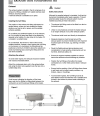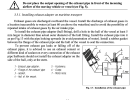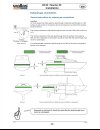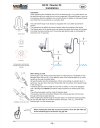You are using an out of date browser. It may not display this or other websites correctly.
You should upgrade or use an alternative browser.
You should upgrade or use an alternative browser.
Chineese Diesel Heaters - Extras
- Thread starter sir-vivor
- Start date
Birdsnest
Well-Known Member
Mine's mid ship and high. Never had a single issue.where are most finding the best exit point in the hull for exhaust
Rain City
Crew Member
Just don't put it where you'd hang a fender. Don't ask me why I know that.where are most finding the best exit point in the hull for exhaust
sir-vivor
Well-Known Member
Foxsea
Well-Known Member
The best is so the exhaust tube is short, sloping slightly downward and a minimum 8" above the waterline.where are most finding the best exit point in the hull for exhaust
ryanb
Well-Known Member
Would this be alright if heater is forward cuddy area View attachment 74804
I think along the side of the hull instead of the superstructure would be preferable, depends where you are putting the heater itself. That location would be conducive to more exhaust getting into helm/cockpit. Generally these things don't smell when running, but you will get a smell on startup and shutdown.
sir-vivor
Well-Known Member
Got it ! seems the ideal spot is below the rub line but 8 inch above the water line and sloping slightly down , and not in the way of a fender !
I hate cutting into the hull .... even 8 inches above the water line but better than getting exhaust in the helm , thanks Fog ducker and foxsea and ryanb for the heads up !!
I hate cutting into the hull .... even 8 inches above the water line but better than getting exhaust in the helm , thanks Fog ducker and foxsea and ryanb for the heads up !!
Brando
Well-Known Member
8” is too low your spot next to the cabin is better imo. as it would prevent any water from forcing its way in. Espar lists 12” as minimum. There installation instructions are what I would follow.
sparrow139
Active Member
sparrow139
Active Member
Foxsea
Well-Known Member
Height of discharge above waterline listed anywhere from 8" to 24" by various manufacturers, encompasses sailboat applications, as well. Sailboats heel. Powerboats, not too much. 24" is difficult for small boats to achieve. I personally believe that, with the correct (angled) discharge fitting, 8-12" is ample in a powerboat. Consider where your sink drain is. Certainly not 24" above the WL on smaller vessels.
the fog ducker
Well-Known Member
the higher the better !! unless your fishing lakes lol...8” is too low your spot next to the cabin is better imo. as it would prevent any water from forcing its way in. Espar lists 12” as minimum. There installation instructions are what I would follow.
Brando
Well-Known Member
The difference being a sink drain can have a seacock or valve in place which the exhaust does not and is open to water intrusion should anything happen there is no way to stop water from entering your boat through a 1” hole..Height of discharge above waterline listed anywhere from 8" to 24" by various manufacturers, encompasses sailboat applications, as well. Sailboats heel. Powerboats, not too much. 24" is difficult for small boats to achieve. I personally believe that, with the correct (angled) discharge fitting, 8-12" is ample in a powerboat. Consider where your sink drain is. Certainly not 24" above the WL on smaller vessels.
Foxsea
Well-Known Member
Most production boats with sink drains (above WL) will not have seacocks. If you do have water coming in, putting the boat more than 8 " below the water line, you have a much greater problem to deal with first. But, like all good boaters would, have a tapered plug available, just in case.The difference being a sink drain can have a seacock or valve in place which the exhaust does not and is open to water intrusion should anything happen there is no way to stop water from entering your boat through a 1” hole..
After talking with a fellow who has installed many diesel heaters he says small boats are always challenging for installation. Regarding exhaust outlets, first, use a quality tube and the proper clamps with exhaust sealant. Second, keep the exhaust short - about a meter long is ideal. Keeping the tube level or sloping downward toward the outlet is recommended. Put an 8" upward gooseneck in the exhaust just ahead of an angled down and back thru-hull outlet. 12" above the waterline is recommended for powerboats. He confirms a higher level applies to sailboats. Wrapping the exhaust tube with high-heat tape protects the surroundings (maintain clearances) and eliminates condensation. Also ensure the exhaust is well clear of intake vents, hatches and canvas-enclosed cockpits.
Last edited:
Coyote Spooner
Well-Known Member
Foxsea
Well-Known Member
This is interesting and contradictory: from what they say "never submerge" the heater cannot exhaust through the hull sides in any boat that is actually sailed - only through the transom, near center. On a reach, a sailing vessel is heeled well over and the sides are constantly wet or submerged.View attachment 74837
From the Wallas install instructions. I have a diesel stove/heater. But I’m still going to add a Chinese diesel heater for the wheelhouse and windows.
sparrow139
Active Member
yes , I agree its tough to find a spot that ticks all the boxes. every boat design will have different challenges.Height of discharge above waterline listed anywhere from 8" to 24" by various manufacturers, encompasses sailboat applications, as well. Sailboats heel. Powerboats, not too much. 24" is difficult for small boats to achieve. I personally believe that, with the correct (angled) discharge fitting, 8-12" is ample in a powerboat. Consider where your sink drain is. Certainly not 24" above the WL on smaller vessels.
personally I didn't put mine that close to the water line as I was told by a heater installer that the further away the better, again that is just one guys opinion. and i drilled the hole so now I'm committed.
im looking at approx same position on boat but in the hull portionWould this be alright if heater is forward cuddy area View attachment 74804
Gong Show
Well-Known Member
Most sailboats are pretty tubby in the middle. The aft third pinches into the stern, keeping the waterline lower than the tubby middle third.This is interesting and contradictory: from what they say "never submerge" the heater cannot exhaust through the hull sides in any boat that is actually sailed - only through the transom, near center. On a reach, a sailing vessel is heeled well over and the sides are constantly wet or submerged.
The transom exits the water pretty clean when moving, that would be the best location
Coyote Spooner
Well-Known Member
Similar threads
- Replies
- 16
- Views
- 4K






